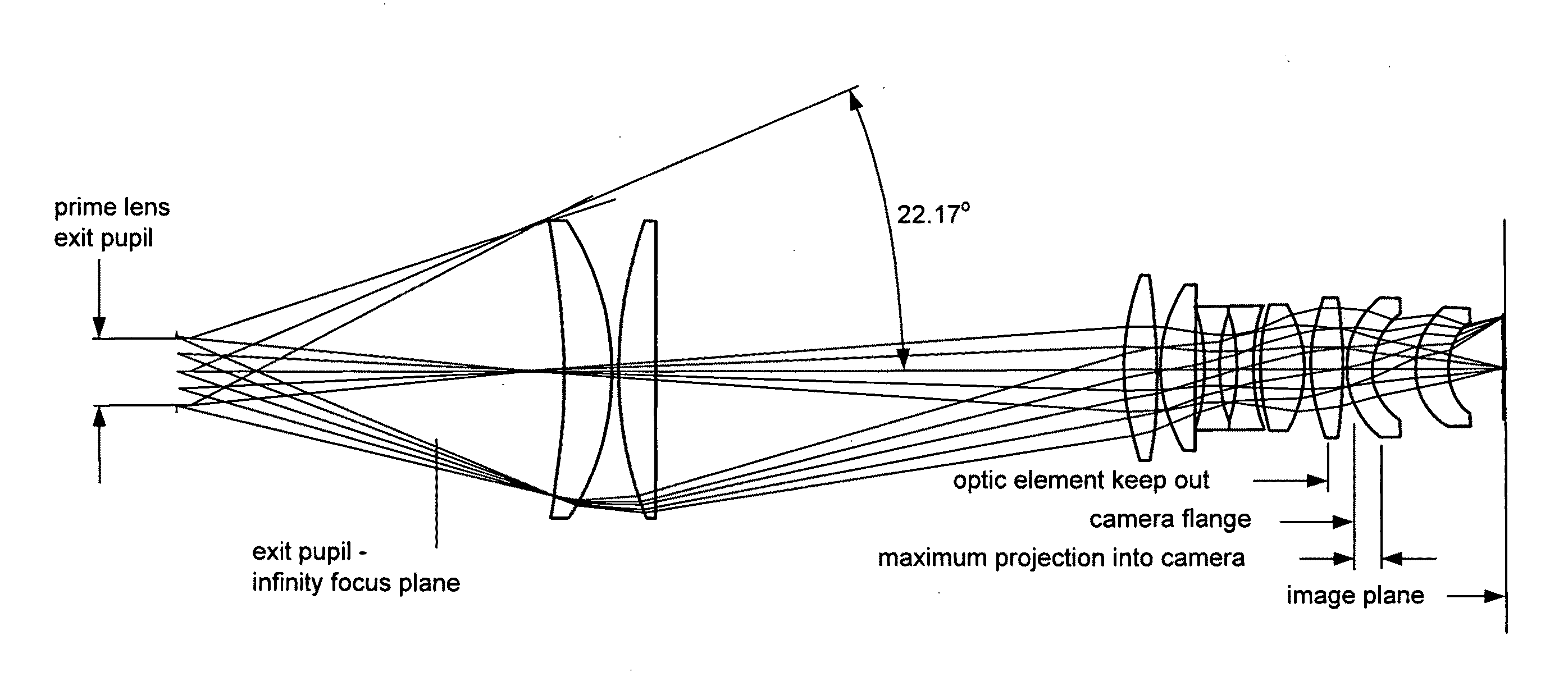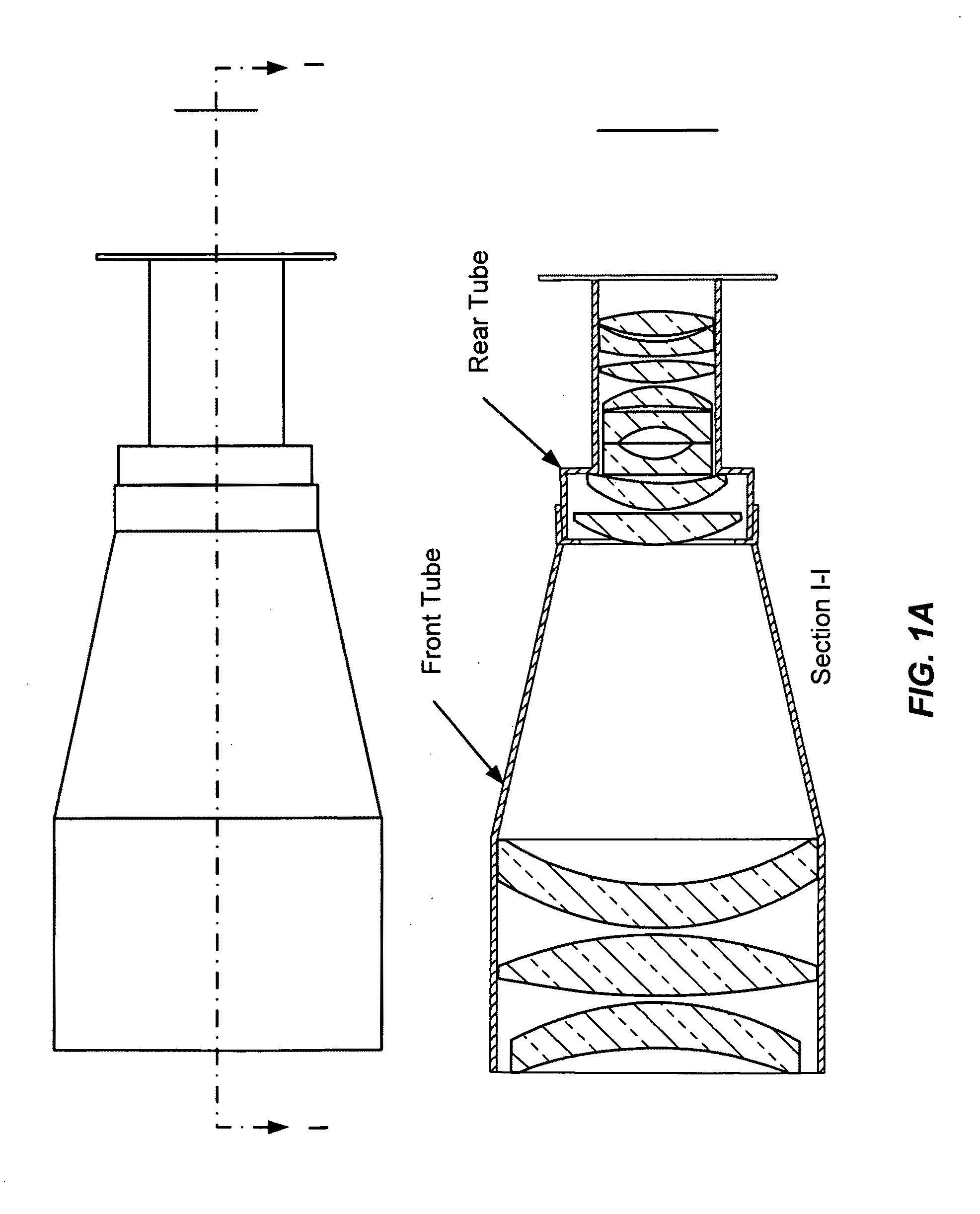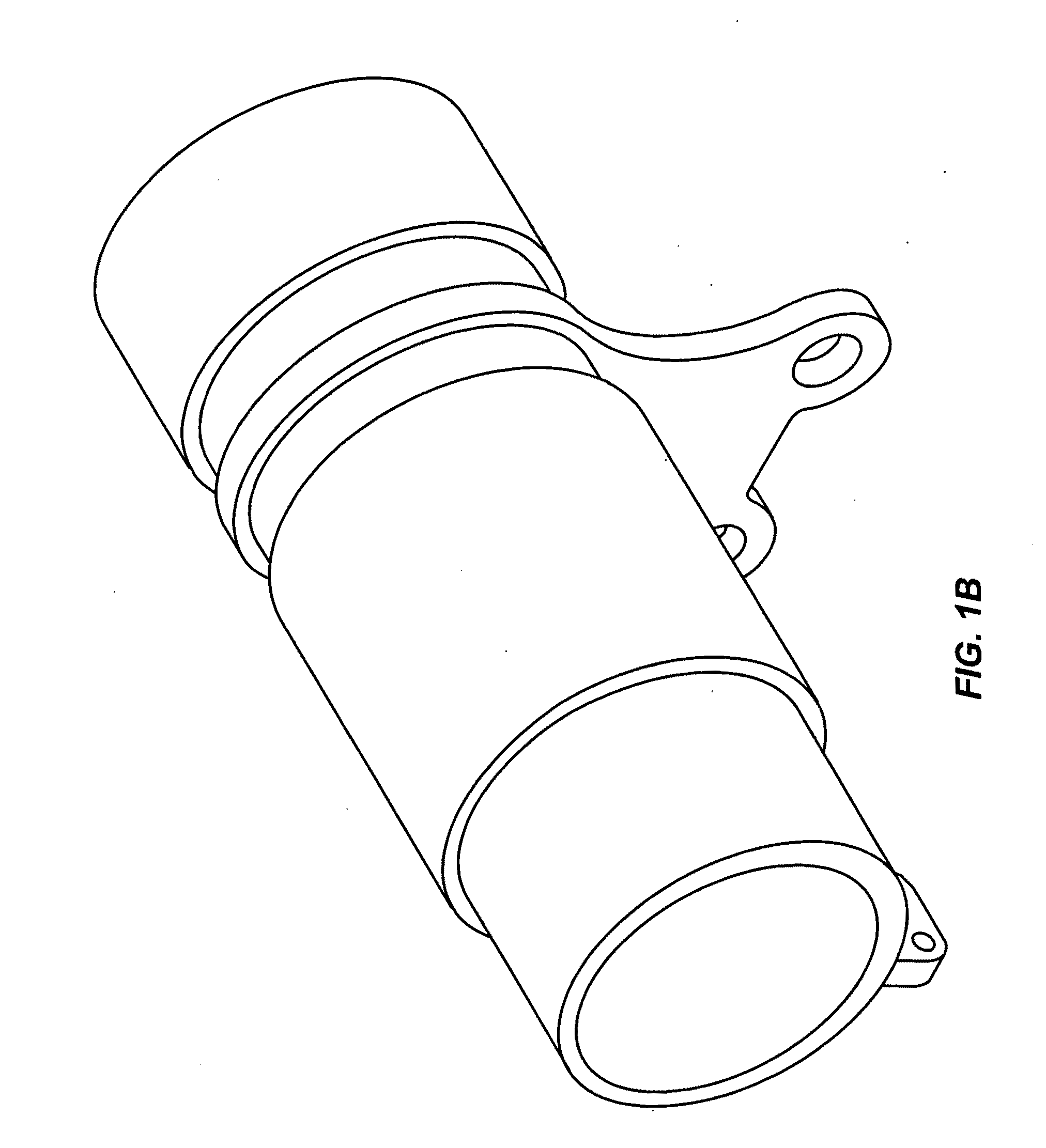Super light-field lens
a super light-field, lens technology, applied in the field of optical systems, can solve the problems of not being used, limiting the use of prior systems, and not providing 3 or 4 mm clearan
- Summary
- Abstract
- Description
- Claims
- Application Information
AI Technical Summary
Problems solved by technology
Method used
Image
Examples
Embodiment Construction
[0030]FIGS. 1a and 1b illustrate a relay element according to one embodiment. As shown in FIG. 1a, a first set of optical elements in the front tube (field lens such as a prime lens) receives light refracted by the lenslet array (not shown) and collimates and focuses that light onto a second set of optical elements in the rear tube, which focus the light onto an image plane (not shown). A sensor, e.g., CCD, CMOS or film, positioned at the image plane receives and records image(s). FIG. 1b shows a perspective view of an example of a housing structure (e.g., lens barrel), with the relay lens on the left side
[0031]In certain aspects, the field lens, lenslet array and relay optical elements are contained within a housing structure (e.g., lens barrel) that allows for adaption of distance between the various elements, e.g., by manual rotation or manipulation, or by electronic control via a controller subsystem. FIG. 2 is a side view of a more detailed example of a housing structure (e.g.,...
PUM
 Login to View More
Login to View More Abstract
Description
Claims
Application Information
 Login to View More
Login to View More - R&D
- Intellectual Property
- Life Sciences
- Materials
- Tech Scout
- Unparalleled Data Quality
- Higher Quality Content
- 60% Fewer Hallucinations
Browse by: Latest US Patents, China's latest patents, Technical Efficacy Thesaurus, Application Domain, Technology Topic, Popular Technical Reports.
© 2025 PatSnap. All rights reserved.Legal|Privacy policy|Modern Slavery Act Transparency Statement|Sitemap|About US| Contact US: help@patsnap.com



